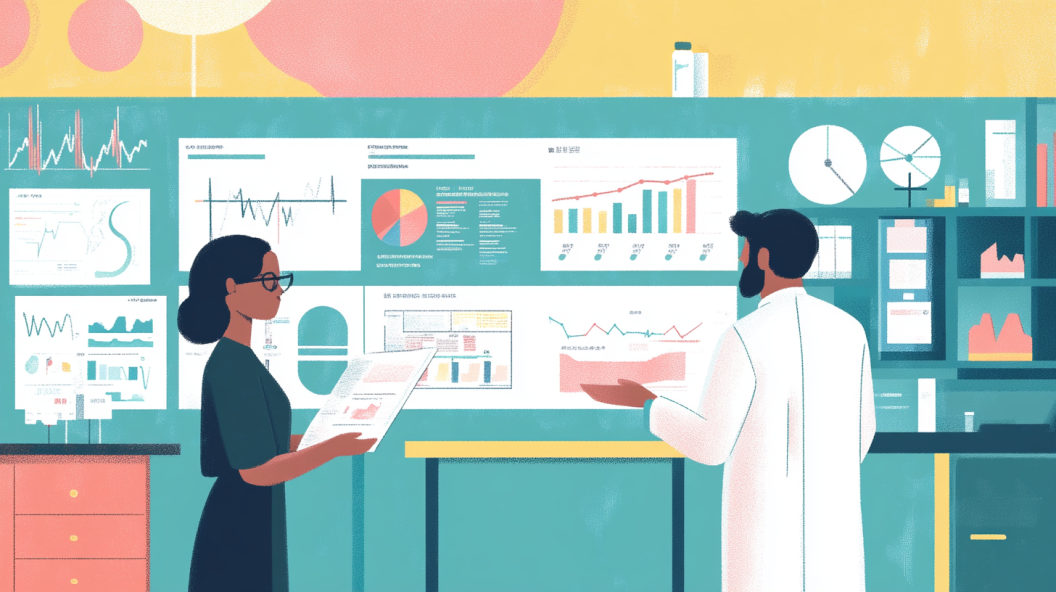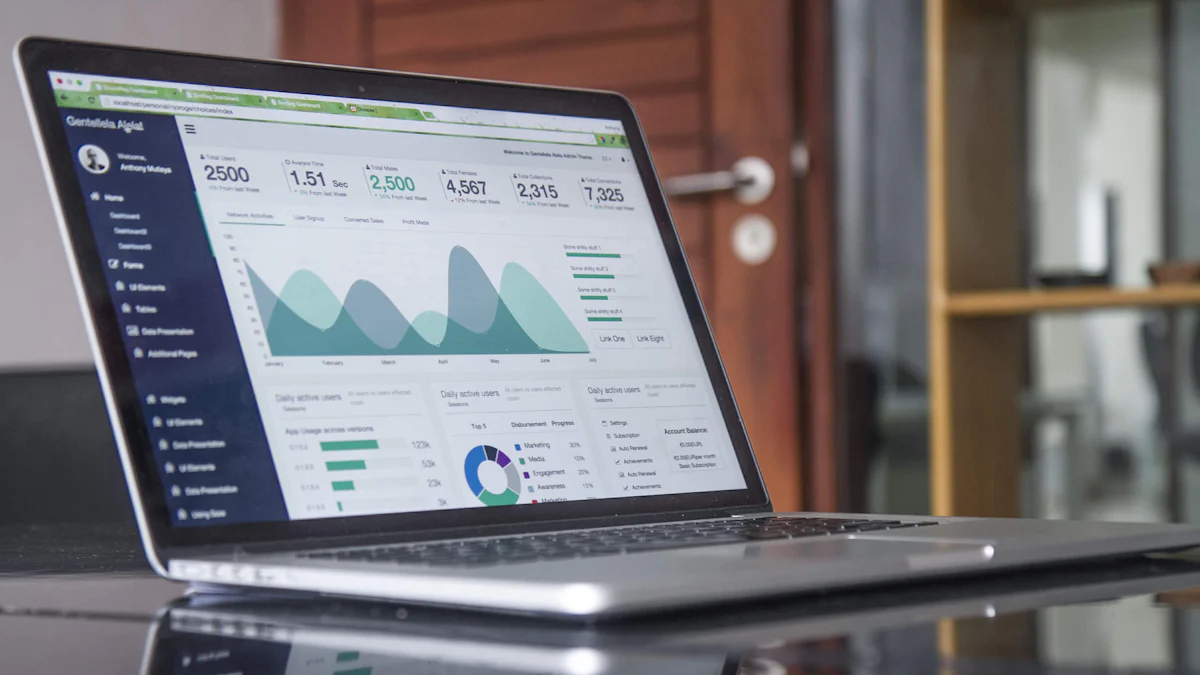Why Healthcare Providers are Turning to Microsoft Power BI

You might wonder why healthcare providers are increasingly turning to Microsoft Power BI. This powerful tool helps you organize, analyze, and interpret complex data effectively. In the healthcare sector, managing resources and optimizing operations become more efficient with Power BI. It supports better patient care and enhances decision-making by providing real-time insights and predictive analytics. However, healthcare providers face challenges like data overload and the need for real-time insights. Power BI addresses these issues, transforming operations and improving outcomes.
Understanding Microsoft Power BI
Overview of Power BI
Microsoft Power BI stands out as a transformative tool in the realm of data analytics. You can harness its capabilities to revolutionize how you handle data. With its intuitive drag-and-drop interface, Power BI simplifies the process of data exploration and manipulation. This ease of use allows you to focus more on deriving insights rather than getting bogged down in data preparation.
Key Features
Power BI offers several key features that make it indispensable for healthcare providers:
Interactive Visualizations: You can create compelling reports and dashboards that effectively communicate complex data.
Self-Service Business Intelligence: Power BI empowers you to generate reports without needing IT or database professionals.
Robust Data Transformation: The tool allows you to transform raw data into meaningful insights with minimal effort.
Integration Capabilities
Integration is another strong suit of Power BI. You can seamlessly consolidate information from multiple sources, making it easier to analyze and derive insights. This capability ensures that you have a comprehensive view of your data, which is crucial for informed decision-making.
Power BI in the Context of Healthcare
In the healthcare sector, Power BI plays a pivotal role. It addresses specific challenges that healthcare providers face, such as managing vast amounts of data and the need for real-time insights.
Data Management
Healthcare providers often deal with an overwhelming volume of patient data. Power BI helps you manage this data efficiently. By organizing and visualizing data, you can identify trends and patterns that might otherwise go unnoticed. This capability is crucial for improving patient care and optimizing operations.
Real-time Analytics
Real-time analytics is another area where Power BI excels. You can gain immediate insights into patient data, which is vital for timely decision-making. This feature enhances your ability to provide personalized care and improve patient outcomes. By leveraging real-time data, you can make evidence-based decisions that lead to better healthcare delivery.
Challenges in Healthcare Data Management
Healthcare providers face significant challenges in managing data effectively. Understanding these challenges helps you appreciate why tools like Microsoft Power BI are becoming essential.
Data Overload
Volume of Patient Data
You encounter vast amounts of patient data daily. This data includes medical histories, treatment plans, and diagnostic results. Managing such a large volume can overwhelm traditional systems. Power BI simplifies this by organizing and visualizing data, making it easier for you to identify trends and patterns.
Complexity of Medical Records
Medical records often contain complex information. You need to navigate through various formats and terminologies. Power BI helps by transforming raw data into clear, actionable insights. This transformation allows you to focus on patient care rather than data management.
Need for Real-time Insights
Decision-making Processes
Timely decisions are crucial in healthcare. You require real-time data to make informed choices about patient treatments and resource allocation. Power BI provides real-time analytics, enabling you to monitor patient information and hospital resources efficiently.
Patient Care Optimization
Optimizing patient care involves quick access to accurate data. You need tools that support evidence-based decisions. Power BI empowers you with interactive visualizations and self-service business intelligence. These features enhance your ability to deliver personalized care and improve patient outcomes.
By addressing these challenges, healthcare providers can transform operations and enhance services. Power BI stands out as a versatile tool that supports better decision-making and operational efficiency.
How Power BI Addresses Healthcare Challenges
Healthcare providers face numerous challenges in managing and interpreting vast amounts of data. Microsoft Power BI offers solutions that streamline data analysis and enhance decision-making, transforming how you handle healthcare data.
Streamlining Data Analysis
Power BI simplifies the process of analyzing complex healthcare data. You can transform raw data into clear, actionable insights, which is crucial for improving patient care and operational efficiency.
Simplified Data Visualization
With Power BI, you can create interactive visualizations that make complex data easy to understand. This feature allows you to quickly identify trends and patterns in patient data. For example, a hospital might use Power BI to track patient satisfaction scores and readmission rates. By visualizing this data, you can pinpoint areas needing improvement and take action promptly.
Customizable Dashboards
Power BI enables you to design customizable dashboards tailored to your specific needs. These dashboards provide a comprehensive view of key metrics, helping you monitor performance and make informed decisions. You can adjust these dashboards to focus on different aspects of healthcare operations, such as resource allocation or patient outcomes, ensuring you always have the most relevant information at your fingertips.
Enhancing Decision-making
Power BI empowers healthcare providers to make better decisions by offering predictive analytics and evidence-based insights. These capabilities are essential for delivering high-quality patient care and optimizing healthcare operations.
Predictive Analytics
Predictive analytics in Power BI allows you to anticipate future trends and outcomes. By analyzing historical data, you can forecast patient needs and allocate resources more effectively. This proactive approach helps you improve patient care and reduce costs. For instance, you might predict an increase in patient admissions during flu season and prepare accordingly.
Evidence-based Decisions
Power BI supports evidence-based decision-making by providing real-time data insights. You can access up-to-date information on patient conditions and treatment outcomes, enabling you to make informed choices. This capability enhances your ability to deliver personalized care and improve patient outcomes. By relying on data-driven insights, you can ensure that your decisions are grounded in solid evidence.
Benefits of Power BI for Healthcare Providers
Healthcare providers increasingly rely on Microsoft Power BI to enhance their operations and patient care. This tool offers significant advantages that can transform how you manage healthcare data and services.
Improved Operational Efficiency
Power BI plays a crucial role in boosting operational efficiency for healthcare providers. You can streamline processes and allocate resources more effectively, leading to smoother operations.
Resource Allocation
Efficient resource allocation is vital in healthcare settings. Power BI helps you analyze data to determine where resources are most needed. By visualizing data trends, you can make informed decisions about staffing, equipment, and facilities. This proactive approach ensures that you allocate resources where they will have the greatest impact, ultimately improving patient care.
Workflow Optimization
Optimizing workflows is another area where Power BI excels. You can identify bottlenecks and inefficiencies in your processes by using its data visualization capabilities. This insight allows you to implement changes that enhance productivity and reduce wait times for patients. As a result, you can focus more on delivering quality care rather than managing logistical challenges.
Healthcare organizations: "By adopting Power BI, healthcare organizations can improve their services and focus more on caring for patients."
Enhanced Patient Outcomes
Power BI not only improves operational efficiency but also enhances patient outcomes. You can deliver more personalized care and reduce errors, leading to better overall health results.
Personalized Care
Personalized care is essential for meeting the unique needs of each patient. Power BI enables you to analyze patient data and tailor treatments accordingly. By understanding individual health patterns, you can provide targeted interventions that improve patient satisfaction and outcomes. This personalized approach fosters trust and strengthens the patient-provider relationship.
Reduced Errors
Reducing errors is critical in healthcare settings. Power BI helps you minimize mistakes by providing real-time data insights. You can monitor patient information and treatment plans closely, ensuring that you make accurate decisions. This vigilance reduces the likelihood of errors and enhances patient safety.
Healthcare professionals: "Effective communication is the cornerstone of quality patient care. Power BI fosters seamless collaboration among healthcare professionals by providing a user-friendly interface with real-time updates."
Case Studies of Power BI in Healthcare

Hospital Management
Case Study 1
Improving Patient Outcomes: In a large urban hospital, you can see how Power BI transformed patient care. The hospital faced challenges with tracking key metrics like patient wait times and satisfaction scores. By implementing Power BI, healthcare providers gained real-time insights into these metrics. This allowed them to identify areas needing improvement quickly. As a result, they reduced wait times and enhanced patient satisfaction.
Key Actions:
Monitored patient flow in real-time.
Adjusted staffing levels based on data insights.
Implemented targeted interventions to improve patient experiences.
Healthcare organizations: "Power BI provides transparency and visibility into data, enabling swift corrective actions."
Case Study 2
Optimizing Operations: Another hospital used Power BI to streamline its workflow. You might find it interesting how they analyzed operational KPIs to enhance efficiency. By visualizing data, healthcare providers identified bottlenecks in their processes. This insight led to significant improvements in resource allocation and workflow optimization.
Key Outcomes:
Enhanced transparency in operations.
Improved resource management.
Increased overall efficiency.
Healthcare professionals: "Power BI's ability to analyze and visualize data helps in making informed decisions that optimize hospital operations."
Clinical Research
Case Study 3
Enhancing Research Efficiency: In a clinical research setting, Power BI played a crucial role. Researchers needed to manage vast amounts of data from various studies. By using Power BI, healthcare providers consolidated data from multiple sources. This integration facilitated easier analysis and quicker insights, accelerating the research process.
Key Benefits:
Streamlined data management.
Faster access to research findings.
Improved collaboration among research teams.
Case Study 4
Data-Driven Insights: In another research institution, Power BI helped uncover critical insights. Researchers used it to track study progress and outcomes. This capability allowed healthcare providers to make data-driven decisions, enhancing the quality and impact of their research.
Key Achievements:
Improved accuracy in data analysis.
Enhanced ability to predict research outcomes.
Strengthened evidence-based decision-making.
Healthcare providers: "Power BI empowers researchers with the tools needed to transform complex data into actionable insights."
Future Trends in Healthcare Analytics

As healthcare providers navigate an ever-evolving landscape, emerging technologies play a pivotal role in shaping the future of healthcare analytics. By embracing these advancements, you can enhance patient care and operational efficiency.
Emerging Technologies
AI and Machine Learning
Artificial Intelligence (AI) and Machine Learning (ML) are transforming how healthcare providers analyze data. These technologies enable you to predict patient outcomes and personalize treatment plans. By leveraging AI, you can identify patterns in patient data that might not be visible through traditional methods. This capability allows for more accurate diagnoses and tailored care.
IoT Integration
The Internet of Things (IoT) is another game-changer for healthcare providers. IoT devices collect real-time data from patients, providing you with continuous insights into their health. This integration helps you monitor vital signs and detect anomalies early. By using IoT, you can enhance patient monitoring and improve response times, leading to better health outcomes.
Power BI continues to be a cornerstone for healthcare providers, offering tools that drive innovation and expand use cases.
Power BI continues to be a cornerstone for healthcare providers, offering tools that drive innovation and expand use cases.
Continuous Innovation
Power BI's continuous innovation ensures that you stay ahead in data analytics. With regular updates and new features, Power BI adapts to the changing needs of healthcare providers. This adaptability allows you to harness the latest analytical tools, ensuring that your data insights remain cutting-edge.
Expanding Use Cases
The versatility of Power BI means expanding use cases for healthcare providers. You can apply Power BI to various aspects of healthcare, from patient management to clinical research. By doing so, you gain a comprehensive view of operations and patient care. This expansion fosters a more resilient healthcare system, prepared to tackle emerging challenges.
Healthcare organizations: "By embracing Power BI, healthcare organizations can embark on a transformative journey towards efficient data management and informed decision-making."
Incorporating these technologies and tools positions healthcare providers to deliver superior care and optimize resources. As you adopt these innovations, you pave the way for a brighter future in healthcare analytics.
Considerations for Implementing Power BI
Cost and ROI
Initial Investment
When you consider implementing Power BI, understanding the initial investment is crucial. You need to evaluate the costs associated with software licenses, hardware upgrades, and potential consulting fees. This upfront investment ensures that your organization has the necessary tools and infrastructure to leverage Power BI effectively.
Long-term Benefits
Power BI offers significant long-term benefits. You can achieve cost savings through improved operational efficiency and data-driven decision-making. By optimizing resource allocation and reducing errors, you enhance patient care and streamline operations. These benefits often outweigh the initial costs, providing a strong return on investment.
Training and Support
User Adoption
Successful implementation of Power BI requires user adoption. You should focus on training your staff to use the tool effectively. Providing comprehensive training sessions helps your team understand Power BI's features and capabilities. This knowledge empowers them to create insightful reports and dashboards, enhancing their productivity.
Ongoing Assistance
Ongoing assistance is vital for maintaining Power BI's effectiveness. You need to ensure continuous support for your team. This support includes access to help desks, online resources, and regular updates. By offering ongoing assistance, you keep your staff engaged and confident in using Power BI, leading to sustained success in your healthcare operations.
Microsoft Power BI has become a vital tool for healthcare providers. It empowers you to organize, analyze, and interpret data effectively. This leads to informed decisions and enhanced patient outcomes. By using Power BI, you can optimize operations and improve financial performance. The tool uncovers data-driven insights, transforming clinical decision-making and operational efficiency. As a healthcare provider, consider adopting Power BI to revolutionize your services. It paves the way for a more efficient healthcare system, allowing you to focus on delivering superior patient care.
See Also
Harnessing Microsoft Power BI for Effective Data Analysis
Building a Team of Microsoft Power BI Specialists
Revolutionizing Business Operations with Microsoft Power Apps
